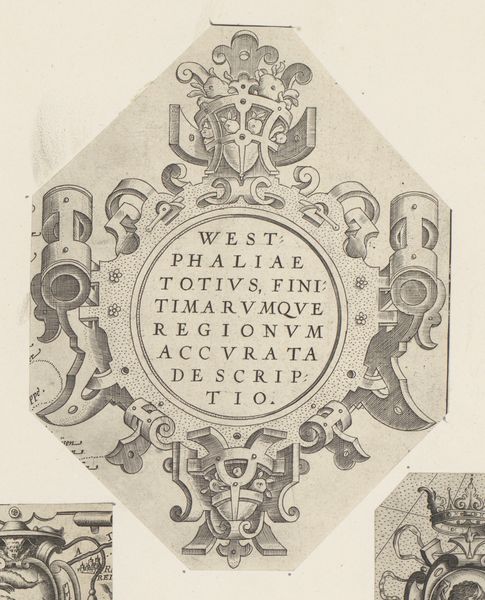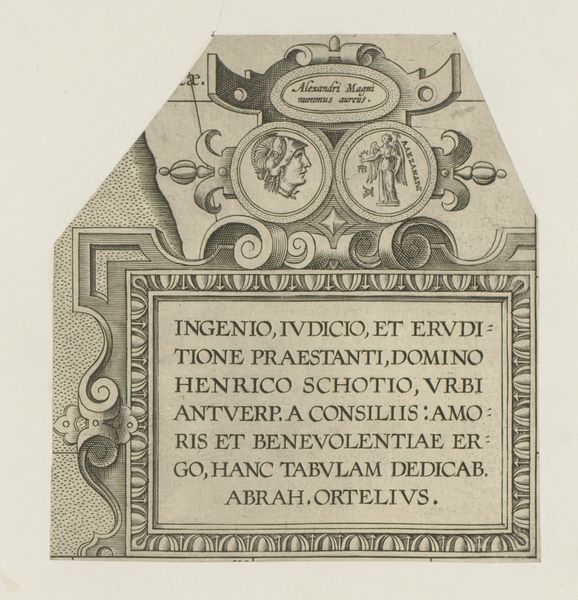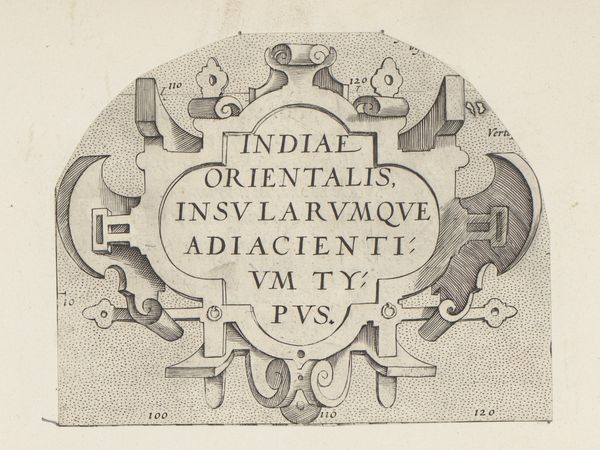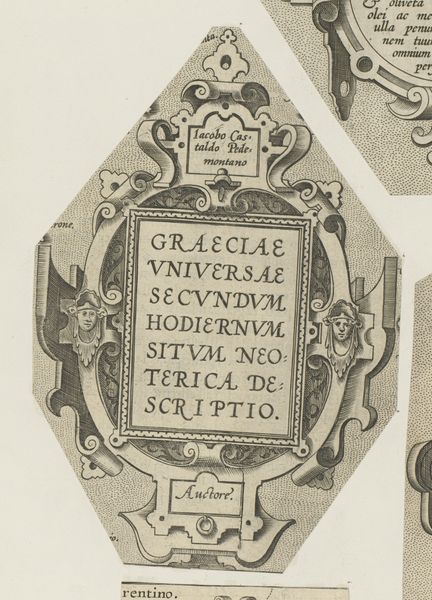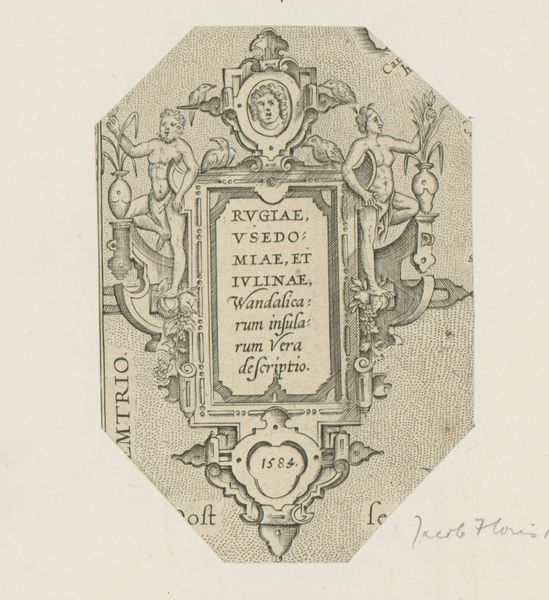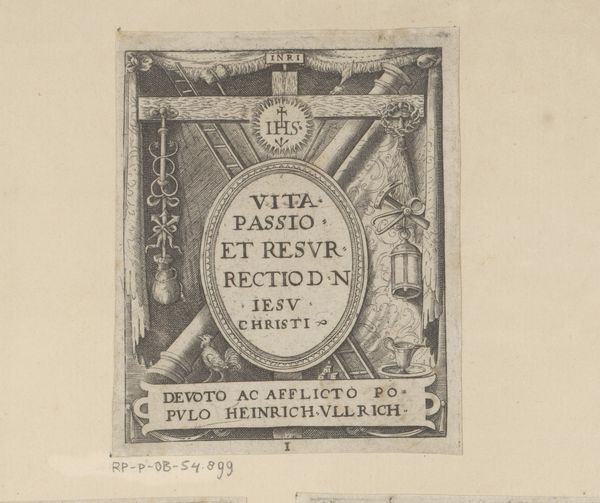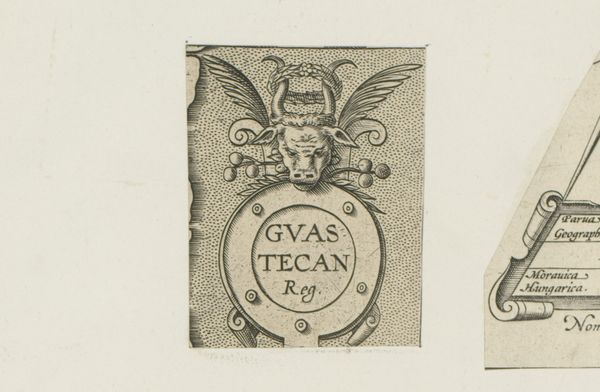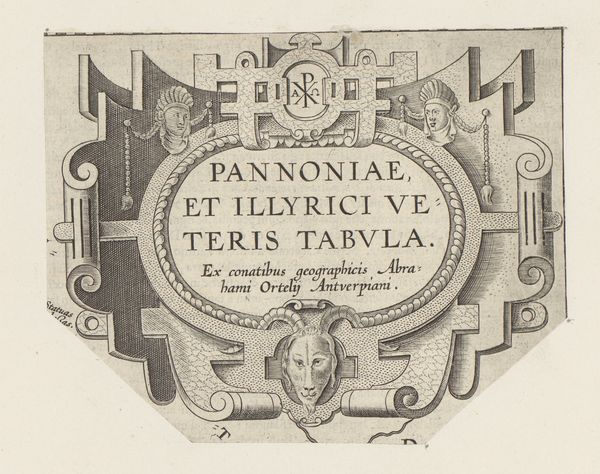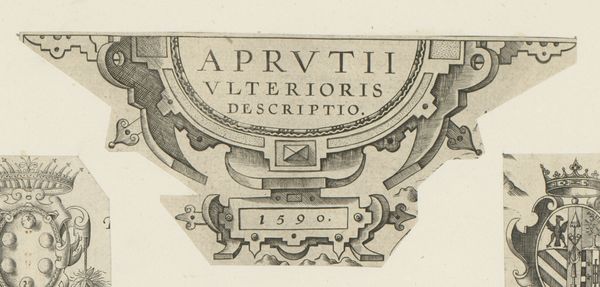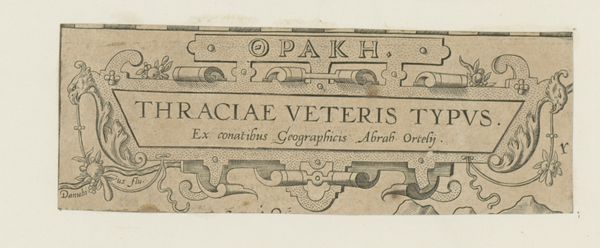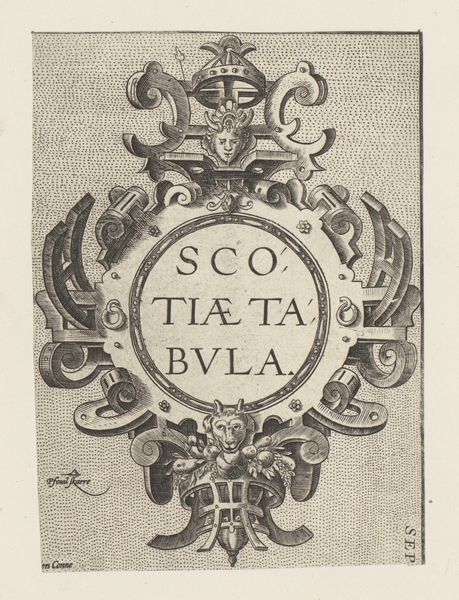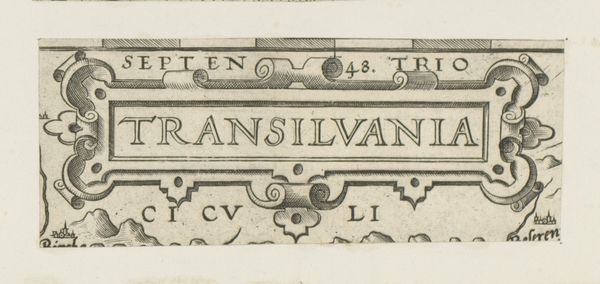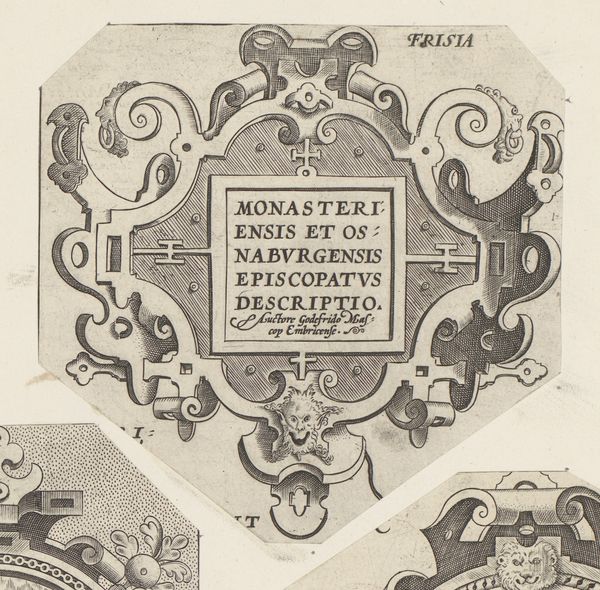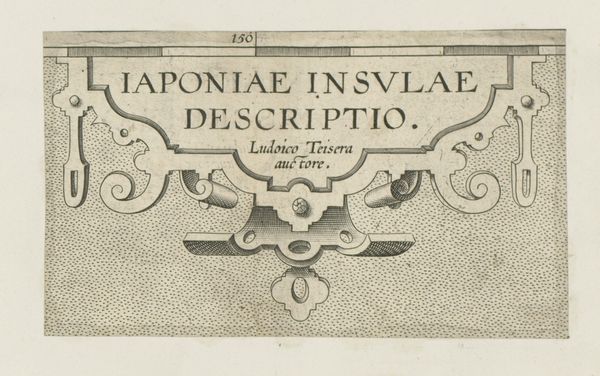
graphic-art, print, engraving
#
graphic-art
# print
#
old engraving style
#
form
#
11_renaissance
#
pencil drawing
#
geometric
#
ancient-mediterranean
#
decorative-art
#
engraving
Dimensions: height 94 mm, width 167 mm
Copyright: Rijks Museum: Open Domain
Curator: I'm immediately struck by the precision of the lines in this print. The symmetry is almost overwhelming. Editor: Indeed. What we're looking at is a 1584 engraving titled "Half Ronde Cartouche met Rolwerk," currently held in the Rijksmuseum collection. While the artist is anonymous, its function speaks volumes about the era’s artistic production and distribution. Curator: A cartouche! And given the date, it certainly has the weight of Renaissance workshops and the labor involved in reproducing these images mechanically. You can almost feel the pressure of the printing press. Editor: Absolutely. The emphasis here on "TUSCIAE ANTIQUAE TYPUS" hints at its use—probably intended as a decorative or illustrative element within a larger map or document referencing ancient Tuscany. The very act of framing knowledge this way connects to colonial narratives of mapping, defining, and possessing territory. Curator: Interesting point. I also notice the form is really playing with geometric principles –circles and hard edges meeting in dynamic harmony. Thinking about the practical purpose of these prints… were these designed to be colored in, or perhaps duplicated via other means, broadening access to this kind of design? Editor: Likely. Engravings like these disseminated visual information widely, albeit within literate and moneyed circles. These were instruments of power, reinforcing particular worldviews through accessible aesthetics. The level of ornate detail underscores its decorative intent but also denotes class—signaling that the production of aesthetic, geographical, and historical awareness was tied to certain economic structures. Curator: So, the means of production becomes as significant as the subject matter—turning a seemingly innocuous ornament into a coded symbol of social status and territorial claims. Editor: Precisely. When we look closely at the materials and modes of creation in historical works such as these, they give a clearer vision into social context and artistic license during periods that now exist as “history.” Curator: Understanding the mechanics involved enriches one’s understanding far beyond its pretty frame; now it carries socio-political baggage as well as material fascination.
Comments
No comments
Be the first to comment and join the conversation on the ultimate creative platform.
